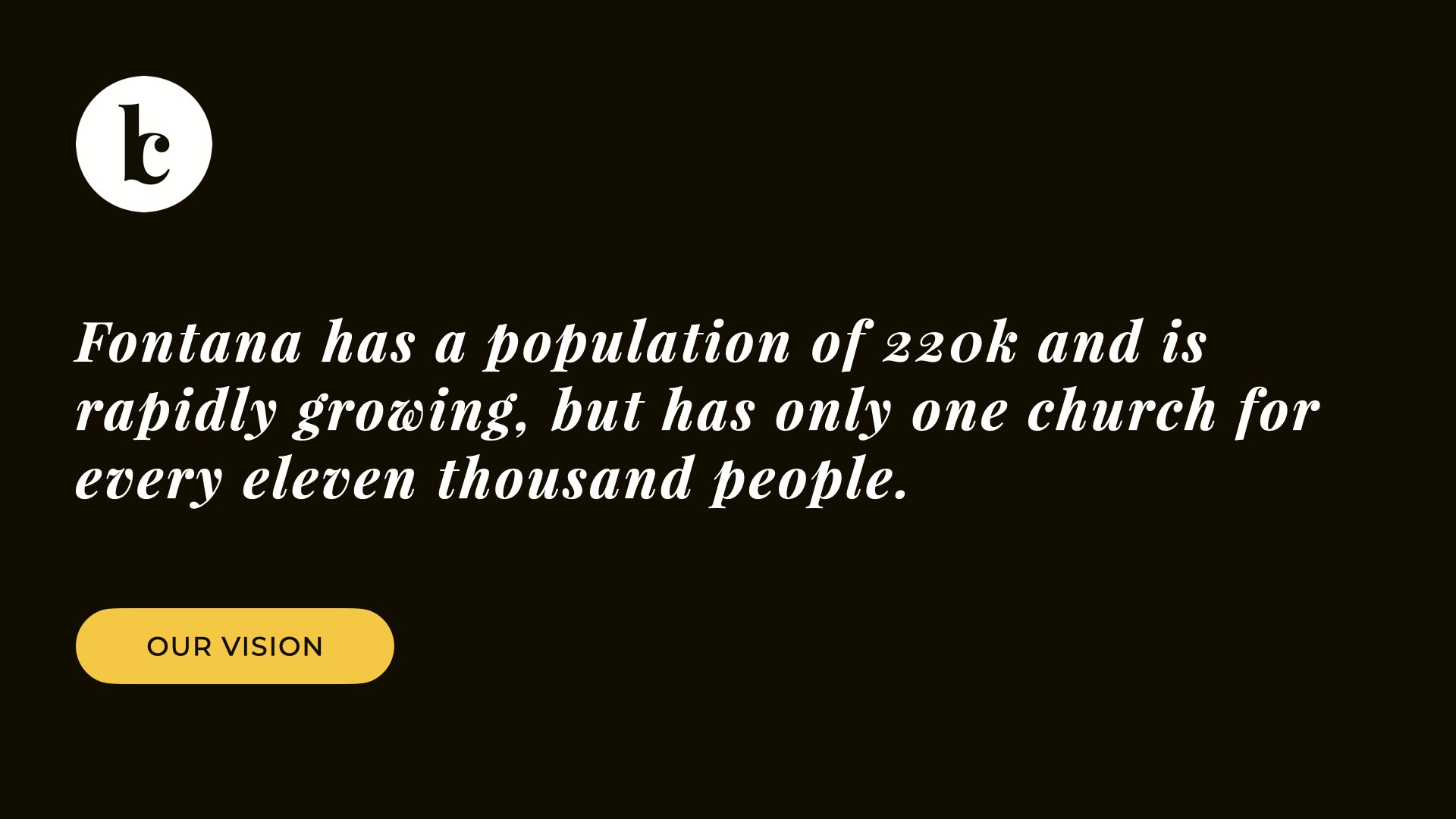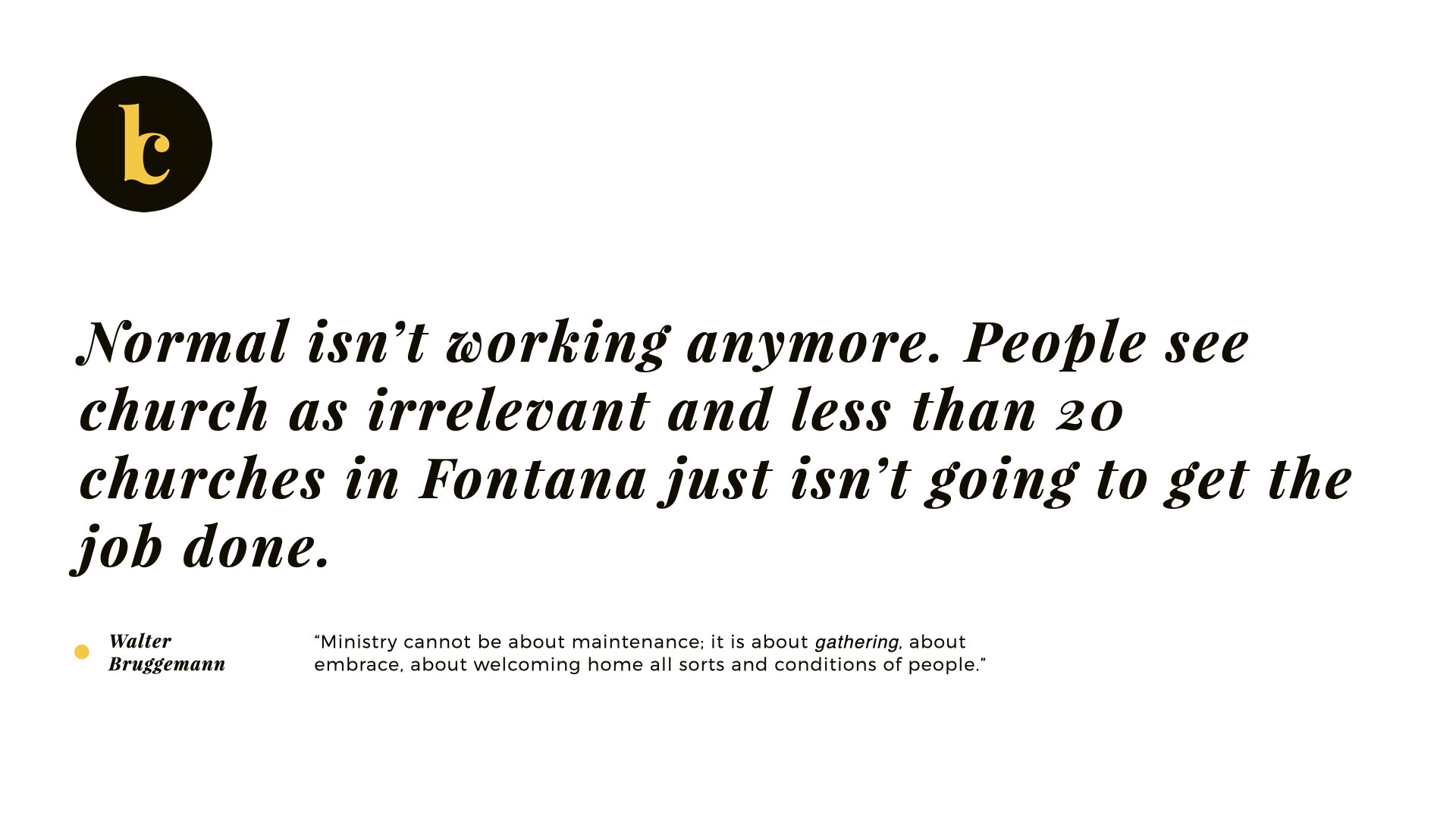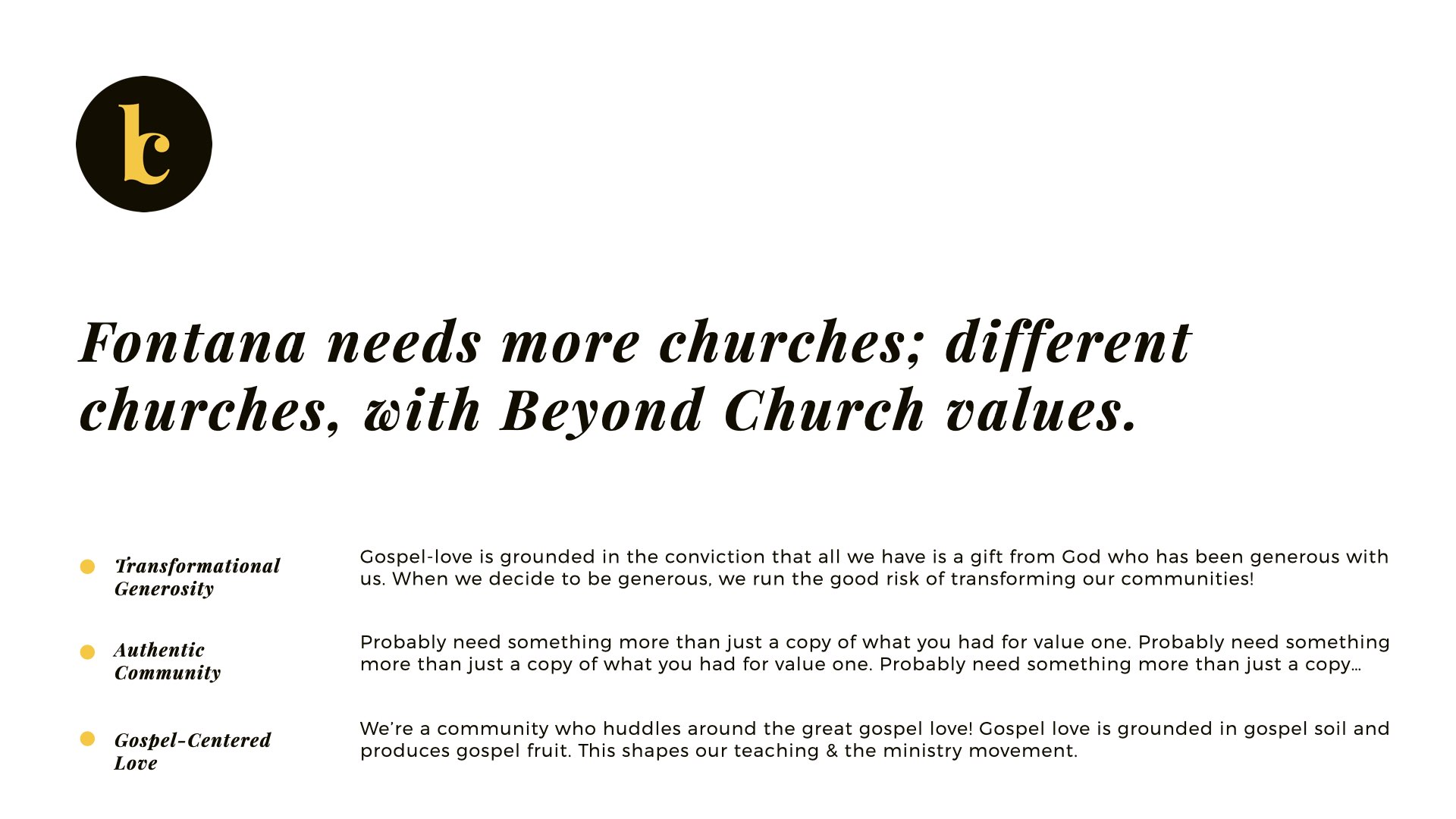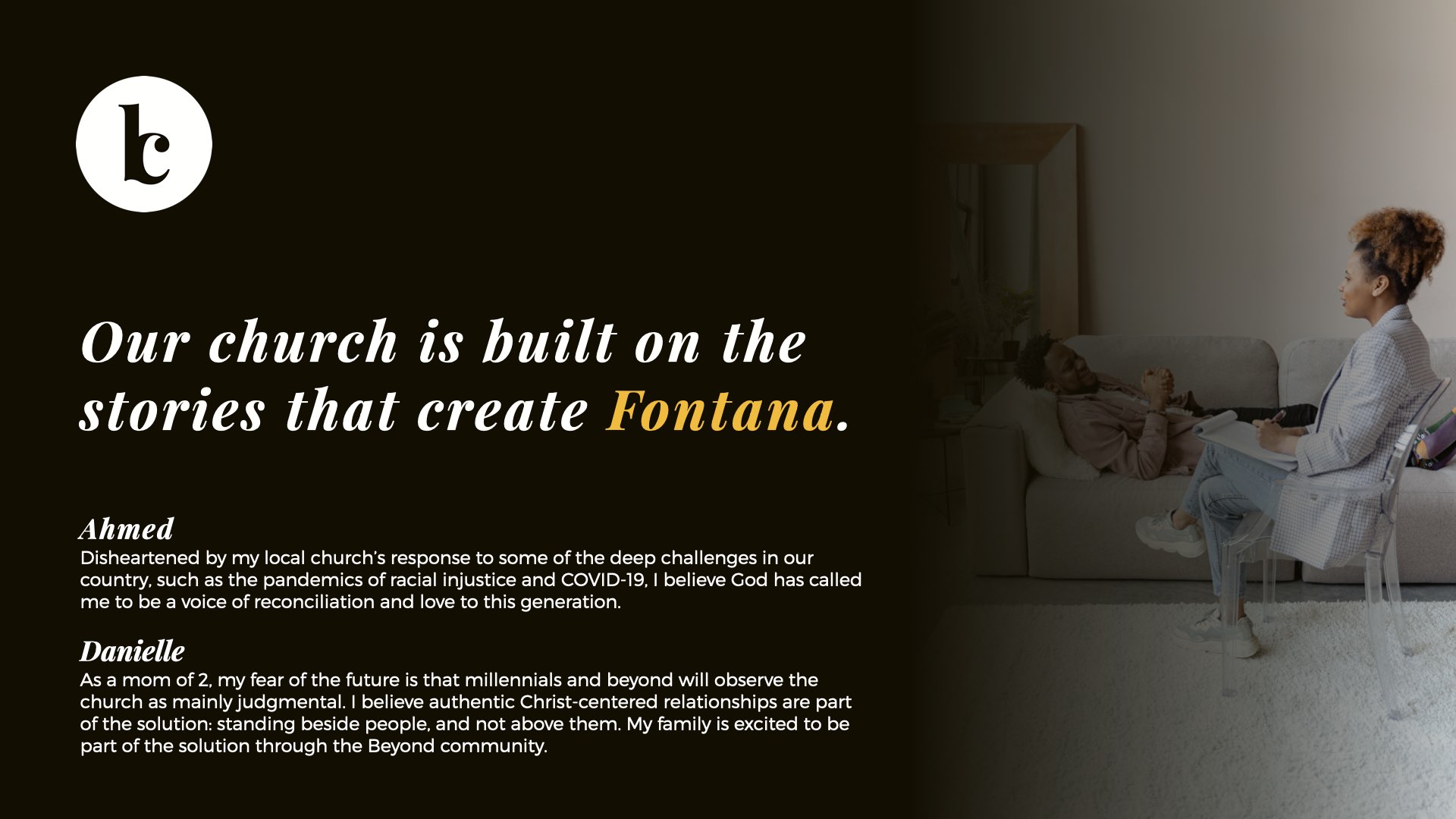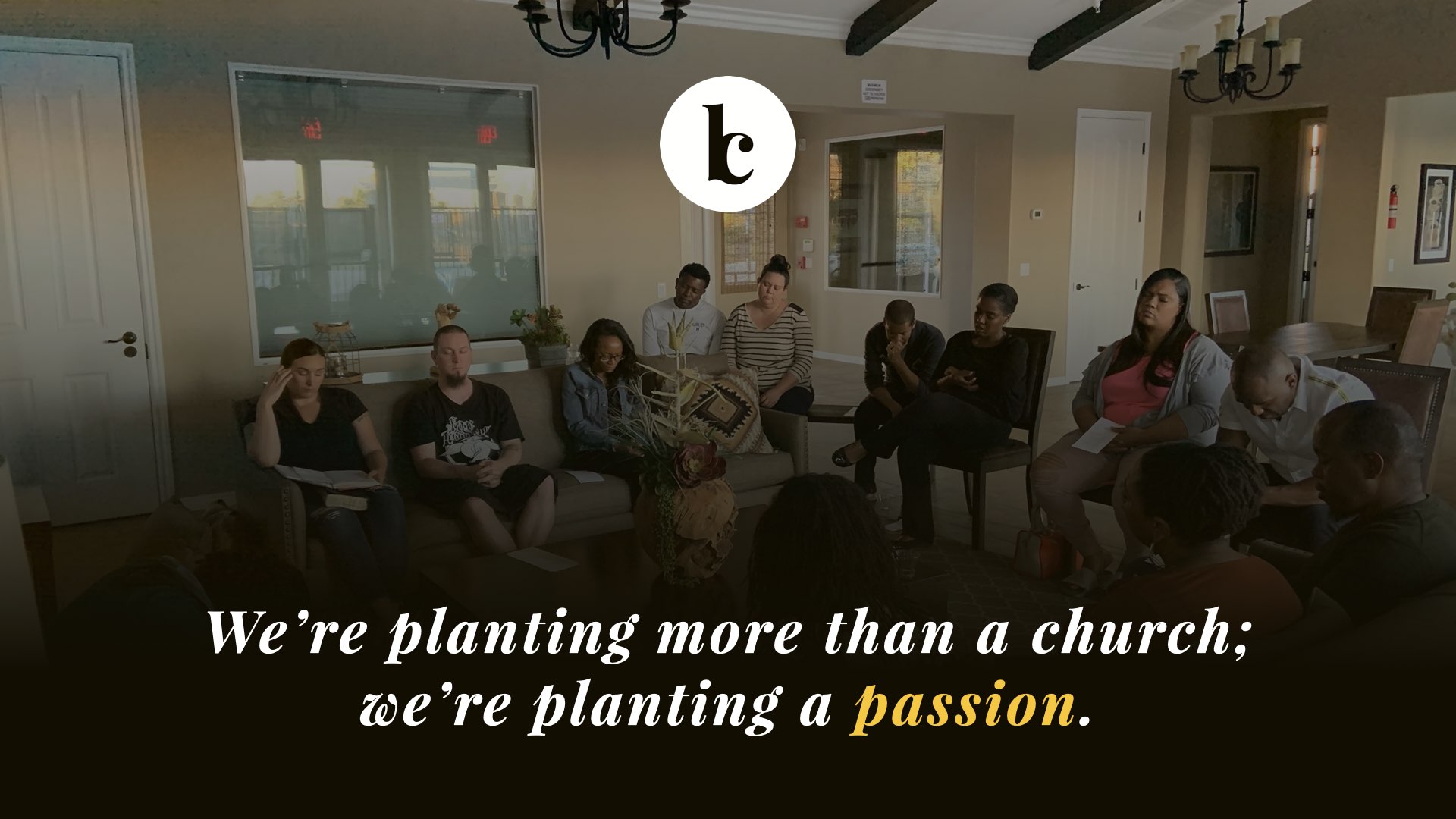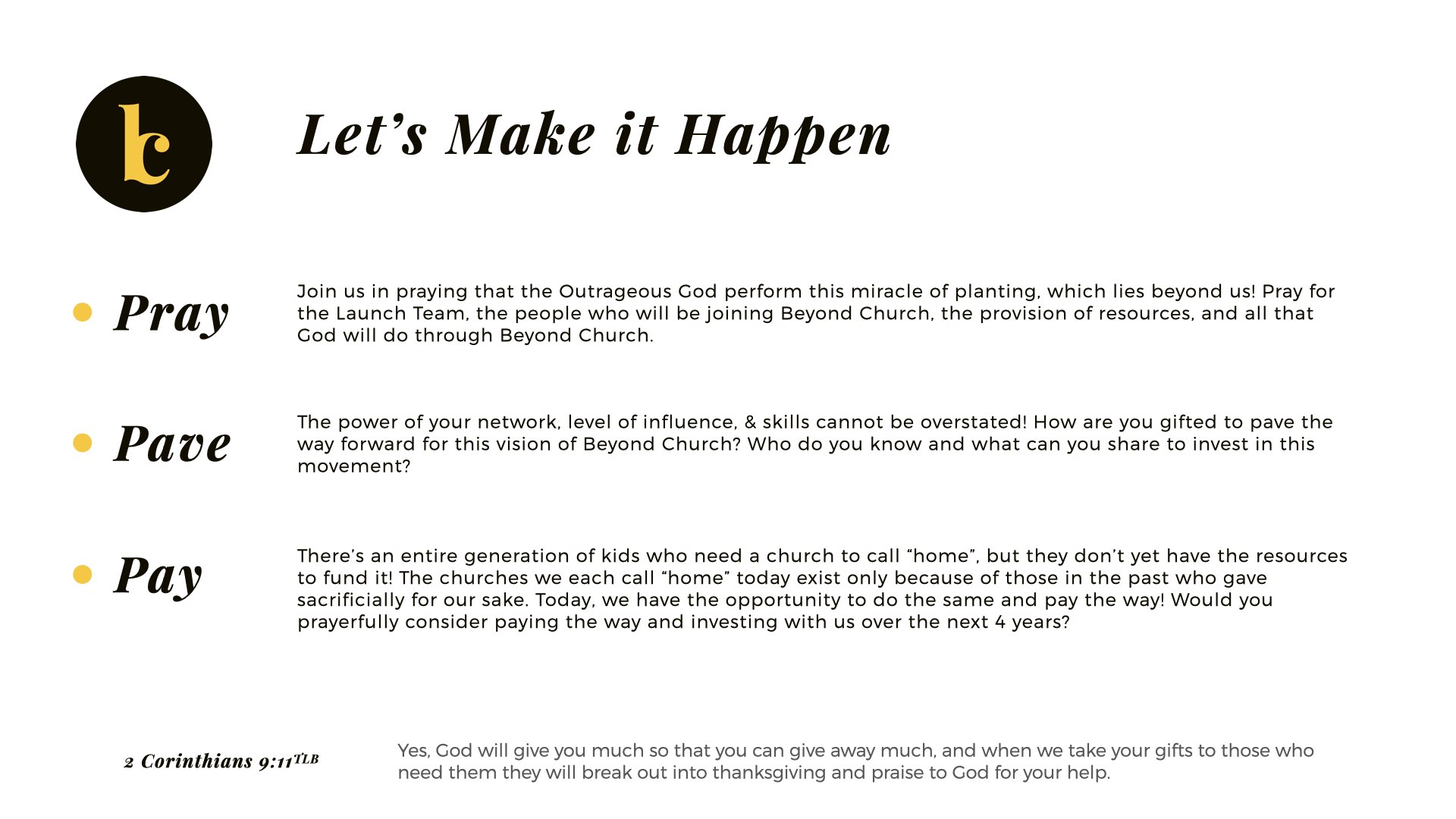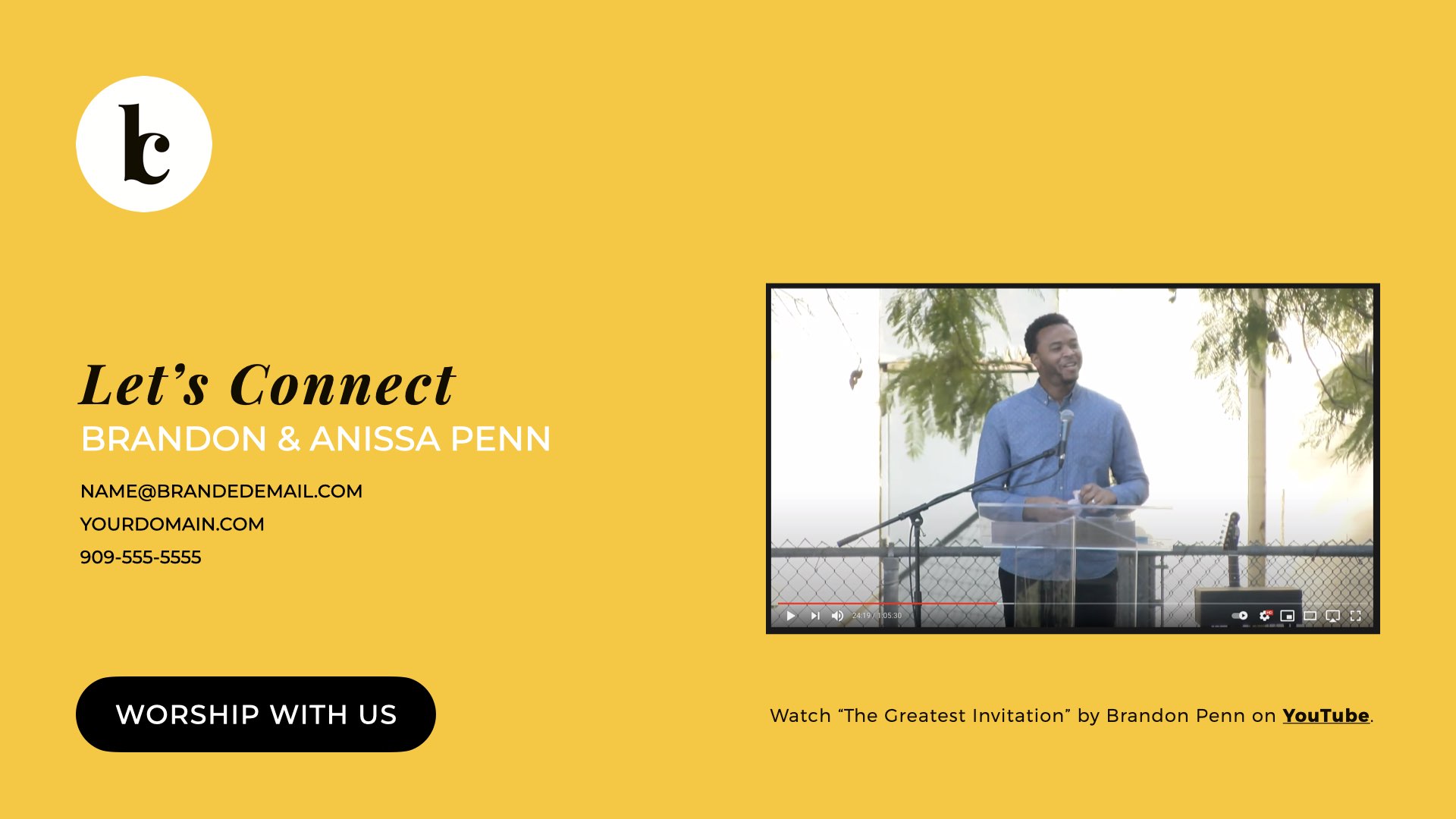How to Effectively Share Your Church Story to Investors [Pitch Deck]
|
|
You spent $5000 and got nothing in return.
You heard it somewhere —a coach, mentor, pier, start up bro— that you needed a pitch deck. You were told to hire a designer, run a high quality print of their developed deck, and distribute it to prospective investors.
Fail. Whale.
And it’s not even your fault.
Pitch decks have been a thing for decades now, but how we think about them needs to significantly change. I’ve been developing decks for decades: from start-ups to church plants, investment decks for pharmaceuticals and medical device manufacturers, and even some dream decks for friends.
Pitch decks aren’t bad, but the process is fundamentally broken.
It’s time to fix it.
Meet Brandon Penn
Brandon is a church planter starting a church in Fontana, Ca. It’s in LA and has a population of 220,000 people and less than twenty churches. The system is broken and what’s there just isn’t working. Brandon came to me and asked if I could help him design and develop their church plant’s deck.
I told him no.
Well, I told him no… but only no because we needed to go about this differently. The way we raised money ten years ago is not the same today, so our tactics need to change to meet our context.
So I made him a deal.
I would help him design and develop his deck, under one condition: we make it free for everyone. We would knock this out for him and his church, but then we would make the Keynote file, PDF, and article walkthrough available to everyone, for free.
He agreed, and here we are.
Three Pitch Decks Problems
Like I said, pitch decks aren’t bad; the process is just broken. What we want to do is think through a few aspects of the process so we can wrap our head around the problem and push forward.
Pitch Deck Design Problems
No matter how good a designer is, they’re not you. While there are some world-class designers I could recommend to you, most designers design for design, not conversion. When you are designing a deck for investors, your target market cares more about substance than flash. They want to know you have a successful track record with market opportunity, not that your deck looked better than the other guy.
In addition to designer problems, you will most likely run into design problems. These two are not the same. Assume now that your designer is amazing, they can create a great initial pitch deck template (aka Slide Deck), and they truly understand you. Assume they get your story. But never assume they know how to lay it out properly for you, in alignment with your business plan. Again, they’re used to designing for design’s sake, not you. You need to design for conversions, and that’s a completely different ball game.
Principles to remember when designing your deck:
- Share your wins. Your last success will indicate future success.
- Less is more. Don’t say too much and narrow your focus on achieving your goals.
- Design to multiple learning styles: i.e. visual, logical, kinesthetic.
- Everything has a next step. Every point has a natural onramp for potential investors.
Pitch Deck Development Problems
Now that you’ve designed your deck, how do you share your story? Inherently, this is the most difficult part of the equation. While we will get to a walk-through of an example shortly, I want to run down some development problems you may run into and what you can do to avoid letting them slow you down.
“It looks good, but it doesn’t feel good.”
While a designer will bring the heat, they can never bring the feels without you. You must permeate every aspect of your deck. What is the problem you are addressing with your church plant and how are you uniquely prepared to meet this moment? This is the question you must answer on every page. It’s on you, and while it is certainly daunting, it is not impossible.
Principles to remember when developing your deck:
- Address problems head on. Name names and have a solution ready.
- Be your own hero. People will be sold on you before they’re sold on your church.
- Elevate your key team leaders. The people you have are the people you are targeting.
- Don’t compromise. Your church is your baby. It’s unique and not cookie-cutter.
- Be specific and measurable. Know your business model and key metrics of success.
- Own it. This isn’t a church planting organization’s start-up; it’s your company vision.
- Remember: You’re called to be faithful, not plant a church.
Pitch Deck Distribution Problems
This is the one that kills me every time. You paid a designer, you spent weeks outlining your story, and now you need to pay to print… or do you? This is it; THIS is the thing that keeps me up at night. It honestly frustrates me to no end.
Can we talk about money for a moment?
When you hire a good designer, you can expect to pay around $1000 for them to design your pitch deck. Assume you hire a designer who knows the investment space, who can interpret your story well, and who will lay it for conversion; expect to pay around $3000. But design costs aren’t the only thing we are talking about here. What about your time and energy? When you hire a designer, you are feeding them daily for weeks. This thing takes time. Because time is money, let’s just put an equal amount on it and price your time at the same rate as your designer’s between $1000 and $3000. So far, we are talking about a $2000 to $6000 hit to your church plant, most likely before you have investors (and before you even considered hiring a pitch deck writer).
You’re six thousand into this thing, and now you need to print. Ugh. Seriously, who prints anything anymore? Someone somewhere told you that investors need this, so you have to do it, right? Not a chance. Investors don’t give a rip. They want to know you’ve been successful and will be successful now. If you can write your story and a plan on a napkin, transfer that to a single email, and break it down over the course of a fifteen page deck, then you’re solid. But if you’re sold on print, you’re dropping between $1000 - $2000 every run. Since your plan is a living document, you will need a few runs along the way. Now your total financial hit is coming in between $3000 and $8000, but likely more depending on market size and capital to be raised. Print is not dead, but it is not right for you. So what works? Well, here’s what we do every time for start-ups.
Principles we remember when distributing decks:
- Pitch Deck developed in Keynote or PowerPoint. Makes it simple for users to edit.
- PDF exports for potential investors. Easy to view online or send via email.
- Tactical Cards for handouts. Glossy on top and matte on back, makes people want to turn it over. Slap an URL on there for downloads and brand it alongside your deck and you’re solid. It’s a cheap run and instantly effective. Plus, if people throw it in the garbage, you won’t be diving into the can to rescue that printed gold.
Ultimately, your distribution plan is 50% of your design plan. How you disseminate your story to potential users or investors will determine how you raise capital. If you can accomplish this part of the puzzle, your audience will see a clearer picture and you will have more money in your pocket for your plant. And if that doesn’t show investors how you are managing money, I don’t know what will. It’s a brave new world, and they’re already ahead of the game. They want to invest in you. They want to reach your addressable market. It’s your job to make it easy for them to do so.
How to Create a Great Investor Pitch Deck for Startups Seeking Financing
Like I said, pitch decks aren’t bad; the process is just broken. What we want to do is think differently about this, from the designer to the design, the process and financials, and how to make the most of your moment. So let’s bring Brandon back in, so we can walk through his deck, and you can see how it works for him, as well as a few presentation tips so you can walk away with valuable insight and actionable items.
Before you pitch, plan.
We coach clients to think through a simple four-step framework (we've been doing this for years) and create something that is uniquely "you", so their time isn't wasted and their pitch doesn't look and feel like someone else.
The Four Step Framework
- What are we doing here?
- Who is your audience?
- Why do they need you?
- How will this work?
Beyond Church and Their Pitch Deck Outline
- Branded Cover Slide with Logo
- Mission Statement
- Reachable Market and Our Problem to Fix with Orchard Community Church Example
- Current Growth Metrics and Market Validation
- Introduction of Opportunity and a Lesson on Faithfulness
- Introduction of Startup Founders
- Introduction of Business Model - Values
- Introduction of Target Users or User Testimonials
- Continuation of Target Users or User Testimonials
- Introduction of Team with Focus
- A-Round Pitch Deck Financials with Financial Forecast and Wisdom from Tithely's Dean Sweetman
- Stage Process and Financial Application
- Contextualization of Current Crisis and Application with Three Helpful Resources
- Investment Opportunities
- How to Connect with Brandon and Beyond Church
- Download the Investor Pitch Deck
The church pitch deck has been a creative and easy way to share God’s work! I’ve used this deck to share vision at 3 meet ups back to back – and people have positively responded to our mission! And oh yea, no printing needed!
…Simply the best and most compelling way to share vision!
I thought building a meaningful prospectus required tremendous technique and a lot of words. But creating this Story Guide was about being laconic, clear on vision, & filled with passion – with those things, minimal technique was needed to create something effective. There’s a saying amongst pastors – If it’s misty in the pulpit, it will be foggy in the pews. The level of clarity for an audience begins with a clear & concise presentation.
Having Russ as our coach helped us keep our message simple and clear! - Brandon Penn, Beyond Church Pastor
Branded Cover Slide with Logo
Your first slide is not the time to pitch your product or sell your services. Potential investors care more about you than they do your “sell”, so start off your pitch by sharing who you are and why you are taking their time. This is an opportunity for you to make them a part of your team before they hear what you’re doing, so sell them on you and it will be easier to sell them on your plant.
Your initial slide may be what you would consider someone's first introduction to your brand, but it's not. Instead, it's more like an initial pitch screen. You see, people know your brand before you even walk in the room. Intimitated? Well, I guess in a way you should be. People talk, and when they talk, they talk of your reputation, what you've done before and what you're considering here. It's highly unlikely you will ever walk into a room where people are completely blind to who you are and what you are attempting to accomplish. Investors will have done their research before they shake your hand, so understand that right now, your job is to seal the deal and make them comfortable with you.
Mission Statement
Your mission is the framework that drives your business. From inception to implementation, your mission statement is how you will grow your team, how you attract your audience, and how you grow over time. Share how and why your mission statement is not only important to you, but instrumental to your success.
When we work with churches and companies through the branding process, one of the tings we narrow down hard is the mission statement. Whether we are helping draft an initial approach or rebranding a client, the mission statement is central to movement. After all, it's their "why"; the one thing it all comes down to. Now, some people will think hip and relevant, their copy will speak to their culture and their fonts and colors will be on point. We love it and encourage it, but can I just be honest for a second? None of that means a thing if the practice of your mission isn't carried out daily. You cannot brand for the now; you must brand for life (the eternal). Brandon's focus is currently on Fontana, and rightly so. But his mission extends into his vision to reach the cities around Fontana for the good of the Kingdom of God. That is timeless and follows the model as presented in the early church and the Book of Acts.
Reachable Market and Our Problem to Fix
While most cities lack enough church resources to meet the need, Brandon Penn and Fontana are unique. Fontana is an underserved and under-resourced population, so the fact that there are so few churches to adequately serve the city should be drawn out and made a central focus, not just here, but throughout the presentation.
My friend Assad has a great church plant in Escondido, Ca that gets this principle. You will notice that even though there are multiple churches in Escondido and several more within twenty miles driving distance, that there are very few churches that get North County like Orchard Community Church. One of their framework principles is to be unique not to just San Diego, but even Escondido. In fact, they created a page just for Escondido that discusses what makes makes Escondido unique. In this, Orchard is not just setting themselves up as a church plant seeking to solve a problem, but offering Escondido a unique solution by elevating their community. It's clearly articulated by their vision statements on the page—also used as a landing page for ads—that Escondido is a diverse city that is forward-thinking for people who want a place to call home. Therefore we see their church as unique, their city as unique, and their specific model as a unique representation of a community that will grow Escondido contextually through generations.
Current Growth Metrics and Market Validation
Past is prologue, so Brandon is going to discuss how he’s been successful in the past and prove he will be successful here as Fontana is drowning without enough people to serve the city. This is where he will start discussing the implementation of the business model, his current audience, and the people that are currently on board (as team members and investors).
Notice where Brandon is pushing here: he's not threatening the establishment, he isn't putting anyone or any church down; he's clearly articulating that no matter what, the current context for churches is not going to get the job done in Fontana. His one pivot here is to introduce himself as a catalyst; a change agent of sorts that can begin a movement within Beyond Church, then Fontana, and then as Beyond helps plant churches throughout neighborhoods and nearby cities. Always think back to what Brandon is doing here and remember that just because you're different and just because you're planting a church in an area that needs Jesus, that the current churches aren't doing all they can to serve the cause of Christ. They most likely are, but they most certainly are not enough.
Introduction of Opportunity
Brandon is bent toward justice, not as a pocket passion, but as a guiding life principle. As Fontana has a clear and obvious need, and as his team is ready to meet the moment, he will lay the foundation here for the opportunity to be met by those in the room. For him, God’s salvation is not just a gift for him, but one for everyone. Because of that, he’s encouraging his audience to participate in immediately actionable items.
As an investor, this is where I would begin to make my decision (if not before). I know the person, I know the product, but what I really want to know is if the person and product could produce a profit in this specific space. Because we know Brandon has a proven track record and has a solid backing from like-minded churches on his advisor board, what I really want to know is if this thing will fly. Is this a guarantee? Well, nothing is guaranteed, but I can say for sure that Beyond Church is primed for success.
Introduction of Startup Founders
In the initial stage of development, the focus will ultimately be on the shoulders of those who lead the early church. This is one of the reasons why church plant coaches emphasize the need for the founding pastor to preach every weekend for the first six months. These initial months are all about attraction, so Brandon must sell you on him, as wella s his family. It’s a lot to handle, but it’s what needs to be done. No pressure.
I really want to draw your attention here for a moment. Now, we discussed how you create this deck—from Keynote or PowerPoint to PDF—so we already know the general dissemination process of it all. But the key to remember here is that it is both alive and active. This means you can insert links, videos, etc... into the pitch deck to help your audience take next right steps at every turn. While the image of the Penn family is pretty picture perfect and the copy converts, what really sells this is the call to action (CTA) button where they share their story with you. It's personable, and really helps you lean into their church and the people leading it.
Introduction of Business Model and Your Values
Brandon is now going to share the business model (in expanded terms) but also share the guide rails of his plan: values. One caveat here: you don’t determine your values, you discover them. While Brandon has three values here, he also understands that values are malleable and may need to flex over time as his audience morphs into who God needs them to be for their community.
Introduction of Target Users or User Testimonials
One of the fin discussion items I often have with clients is persona types, not because we want to have a “perfect person” we want to reach, but because we want to have multiple moving targets we seek to market to. People are fluid according to their in-the-moment context, so persona types must go deeper than the surface level of a single mother of three kids.
Continuation of Target Users or User Testimonials
Like before, we are laying out the persona types we are targeting our reach towards, but we are also sharing who we have already reached. This is where past success meets current users. Don’t just share your hope for people to reach; share who you have already reached and how you are making their lives better.
Introduction of Team with Focus
For Brandon, his new church startup is not about a new church for Fontana. Anyone can build a church, but Brandon is building a passion. Buildings and worship services will only get you so far. In today’s climate, passion outranks presentation (thank God). When all is said and done, Beyond Church’s end product will be a passionate people who just so happen to meet in a building every week.
A-Round Pitch Deck Financials with Financial Forecast
Part of the strategy here is to speak the language of everyone in the room. While some will be attracted to stories, others will be moved by finances. It’s your job to speak to everyone. Give a description of your need, where you are at, and forecast it a few years out. Just like you created a pitch deck outline for your designer, you need to create a financial overview for investors.
Church planters need to think like a startup which means being "fundraiser in chief" as well as wearing all the other hats required to start a church. I would even go so far as to say, if the church planter couple/team are not comfortable with presenting a detailed "ask" for financial investment, don't even bother starting. You cannot start any kind of business, profit, or non-profit without starting capital and ongoing funding to reach "profitability". That means you need the financial resources to build and grow the bottom line until the church becomes self-sustaining. If start-up costs are $50,000 and you need $100,000 to support your family for the first 18 months, then you will need to raise this outright, or work a full-time or part-time job to get you through your start-up stage. It's as simple as that. Dean Sweetman, CEO at Tithely
Stage Process and Financial Application
Every church and organization is different. While some angel investors may be moved by stories and financials, others may be moved by specific things you are spending money towards. Larry Osborne talks about this in his pockets presentation. While some may give their tithe out of one pocket and give to a need out of another, they normally only have one more pocket to give to: their individual passion.
Contextualization of Current Crisis and Application
Covid sucks. Losing millions around the world and hundreds of thousands here at home has been an enormous loss. Churches that specifically address the wounds of Covid and assist in the recovery of our cities will be better positioned to serve their cities for generations, than those who chose to go back to business (and politics) as usual. Brandon has a plan, and it’s working.
Covid hit every church hard. We noticed that within a month of enforced lockdowns, most churches experienced a 30% decrease in their giving. A significant portion of their givers went from recurring givers to one-time gifts, as possible. Churches scrambled with how to create an immediate online presence, from improving their website to online church streaming. No one had an immediate answer, but many were ready to meet the moment. These were some of our most read articles for churches who needed to get off the ground, and fast through Covid.
How I Maintain Margin in the Madness of Isolation
No one said this was going to be easy. Watching on as 250,000 Americans die around you can take a toll on you. As politicians fight amongst themselves, throwing their weak to the wolves, we are left to fend for…
Read MoreOnline Courses Create Healthy Churches
Your church is finding their new rhythm. Whether your state or county has restrictions on public gatherings or wearing masks, you are attempting to find a new rhythm for your church. This includes how to do ministry on the weekends with…
Read MoreCoronavirus and the Church: How to Lead Online Groups
Most churches are streaming services or asking their congregations to host watch parties in their homes over the weekend, but what are they doing for small groups? After leading online small groups for over a decade, I have a little…
Read MoreInvestment Opportunities
We’ve shared the problem, we’ve shared possible solutions, and Brandon has shared stories and user testimonials. You’ve seen the financials and our forecast, and maybe you’re sold on the vision. This is the time to give people their next right step. In this case, Beyond Church is specifically looking for three people: givers, prayers, and servers. They need money, they need people who will encourage them through prayer, and they need people with a passion who want to serve Fontana. All Brandon needs to do is make their next right step clear and simple.
How to Connect with Brandon and Beyond Church
The last step of your presentation is to continue the conversation. This is the beginning of a years-long relationship that requires trust and communication. Once you make the ask (and please, don’t forget to go for the big ask), you need to stay present in their lives. Investors are giving you their hard earned time, resources, and finances, but you must be the one to nurture the relationship.
I never knew what a pitch deck was until I consulted with Russ. With his help, I was able to start meeting with large ministries and form partnerships to accomplish a shared mission with multiple kingdom-minded investors. This church pitch deck tool is free, the best tool for the job that makes life and raising capital easier, and like all things that Catalyst Church Creative produces, it’s there to serve you and accomplish what God has called you to do. I’m grateful that tools like this exist for planters and ministers like me who are largely ignorant of this side of things. Using this will help you to communicate more effectively, and allow people to not only understand your passion, but share in it as well. - Peyton Jones at Newbreed Training
Your next pitch deck step.
For those of you who have been wondering “what is a pitch deck” and “how to slide deck”, I hope this guide has provided you with clear next steps to accomplish your goal. I would encourage you to save yourself some money and use this pitch deck template instead of hiring a designer and printing a full run of vision pieces.
Get the Deck, Free.
Included are individual slides of the presentation, as well as a working file for you in Keynote and PowerPoint, in addition to a smaller file size PDF (with active links).




